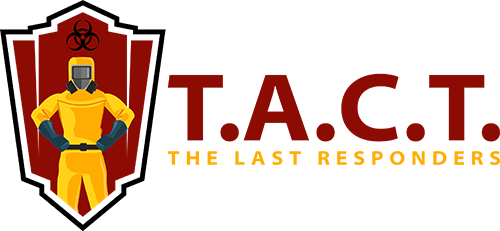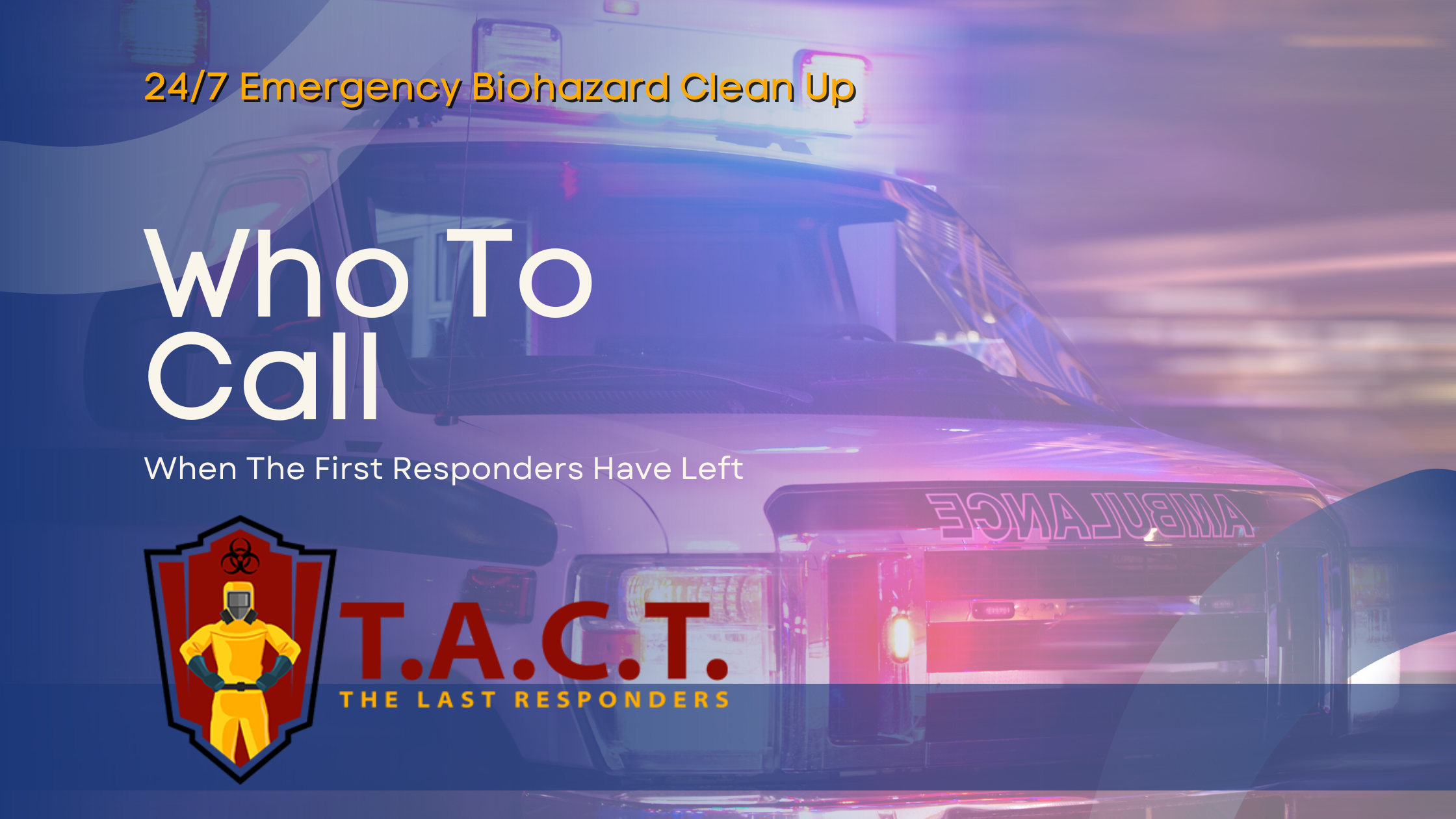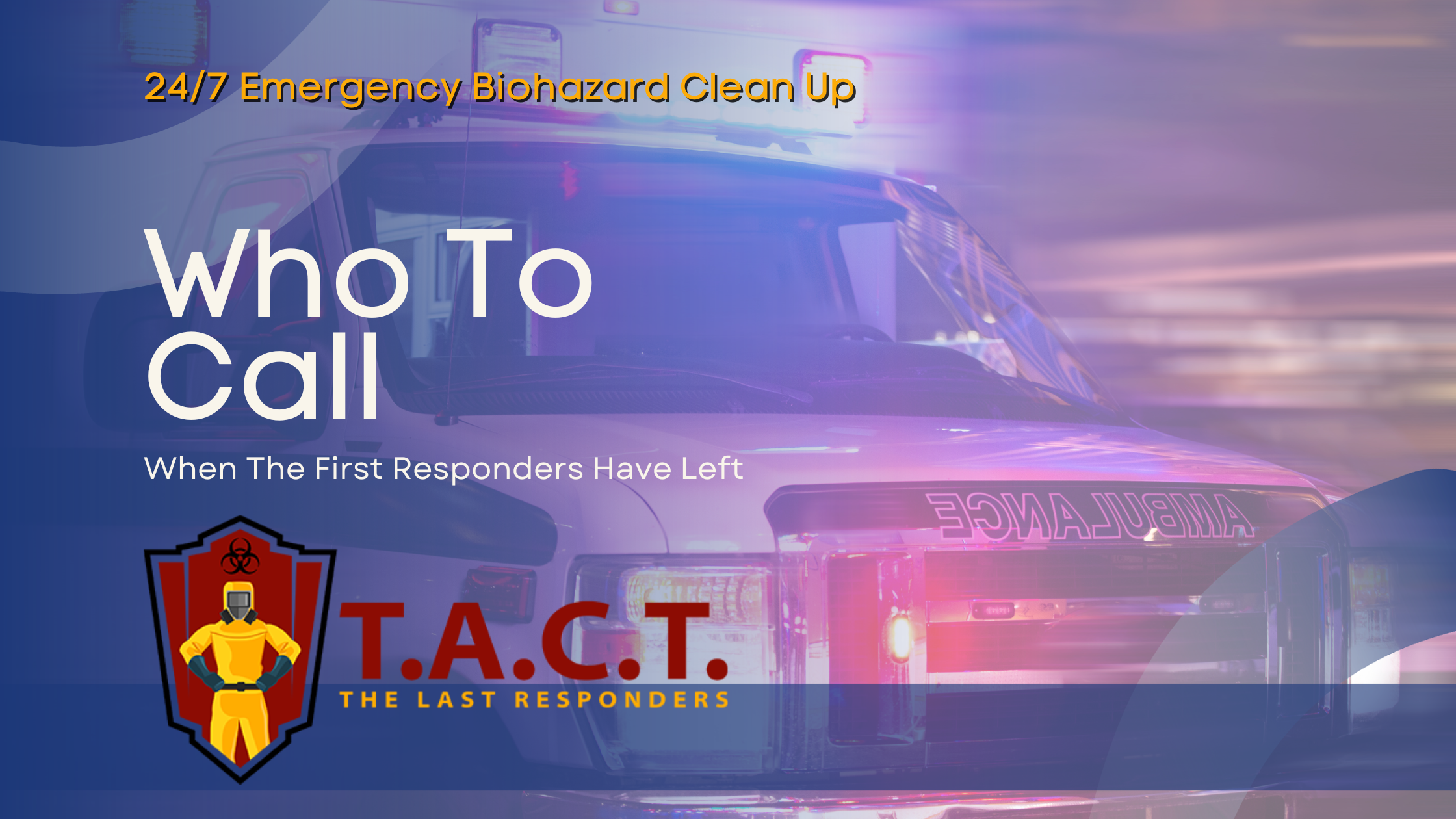How to rid black mold
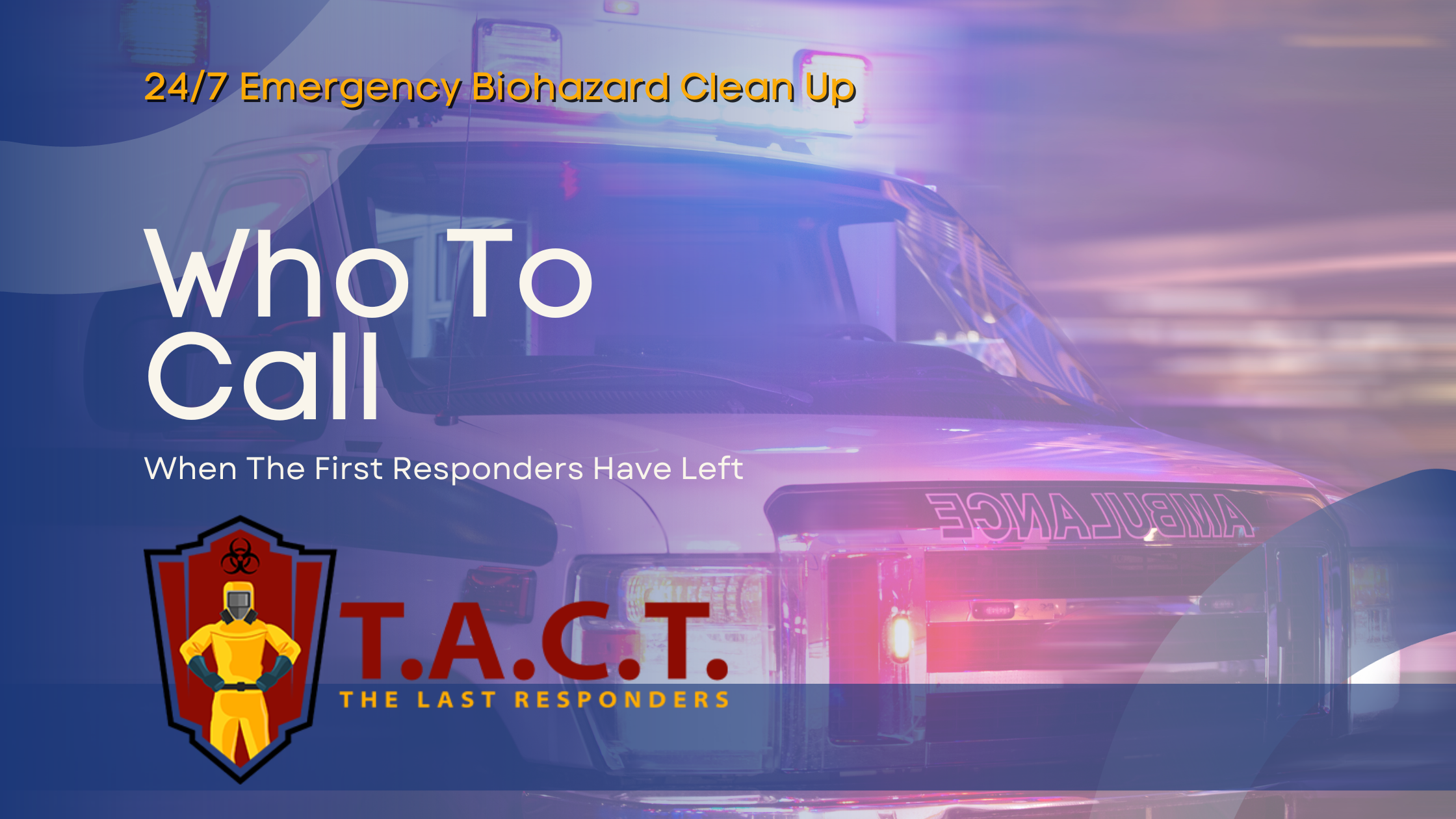
How to Rid Black Mold: Effective Solutions That Actually Work
Dealing with black mold? Here’s a straightforward guide on how to rid black mold. You’ll learn to identify moisture sources, safely treat mold, and prevent it from coming back.
Key Takeaways
Identifying and addressing the source of moisture is crucial for preventing black mold growth in homes.
Safety precautions, including protective gear and proper ventilation, are essential during mold removal to avoid health risks.
Using effective cleaning solutions like hydrogen peroxide, vinegar, and bleach can help eliminate black mold, but extensive infestations may require professional assistance.
Identify the Source of Moisture
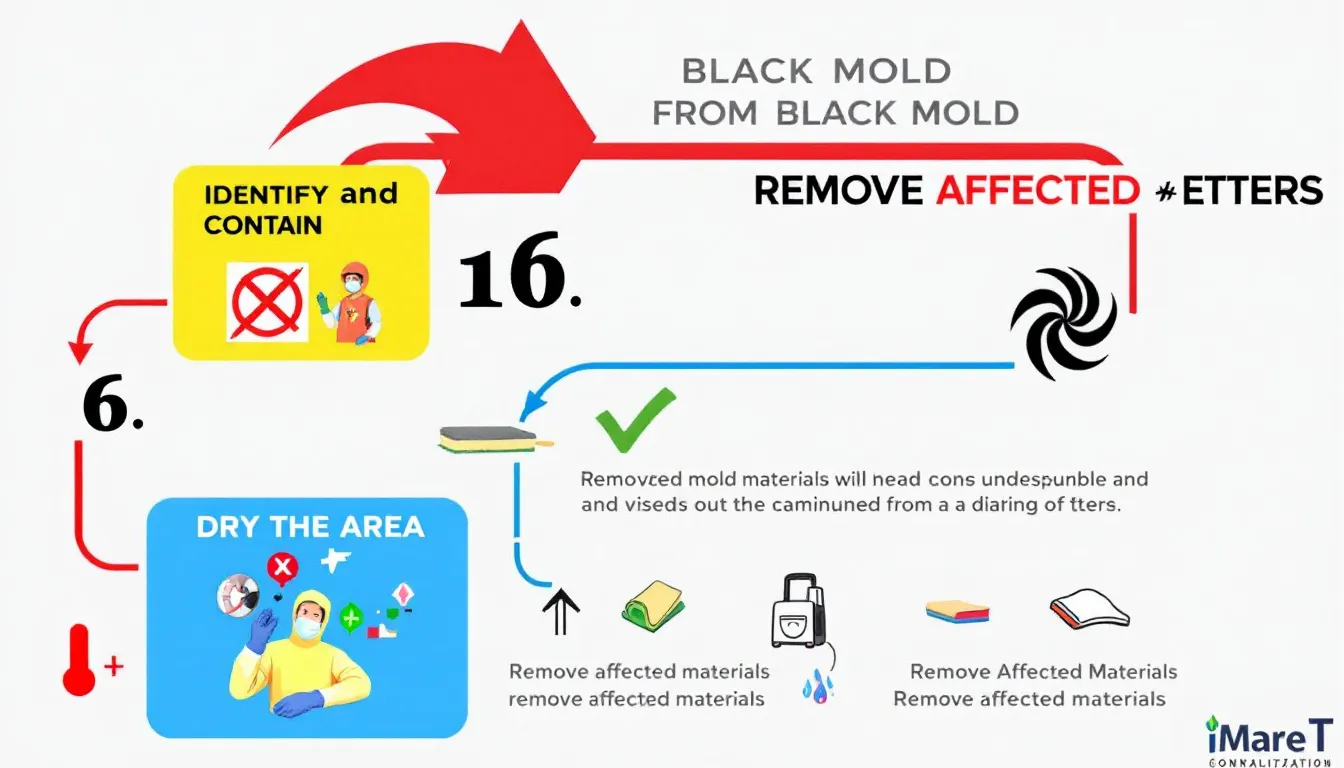
To successfully eliminate black mold from your residence, the initial step is to pinpoint and rectify the source of moisture. Since black mold prospers in damp conditions, locating the origin of this moisture is crucial for halting growth of mold. Typical origins include:
Leaking faucets
Pipe leaks beneath sinks
Condensation within cooling systems
Wet spots in cellars
Humid patches in attics
It’s imperative to tackle issues such as water leaks, ventilation deficiencies, and malfunctioning HVAC systems without delay. Disregarding these matters can result in widespread mold growth that may inflict serious damage on your home’s structure. By promptly identifying and repairing sources of water leakage, you can avert impending complications with mold and safeguard your property against additional harm.
Staying informed about common humidity triggers and employing appropriate detection instruments are essential strategies for preemptively managing potential instances of mold expansion. Routine upkeep paired with anticipatory actions are fundamental practices to ensure that your dwelling remains unaffected by any invasive molds since recognizing an active moisture source is indispensable for prevention efforts.
Common Moisture Sources
Humid and damp areas are typically where you’ll find black mold, with bathrooms and kitchens being common hotspots. Mold tends to grow prolifically in these spaces because of the elevated moisture levels near sinks, showers, and bathtubs. It’s vital to immediately repair any leaks as a proactive measure against mold development.
Elevated humidity levels within the air can also contribute significantly to the proliferation of molds, notably within HVAC systems. If moisture persists for 24-72 hours at high levels, it can quickly lead to an outbreak of mold. By recognizing what promotes moisture buildup, effective strategies can be implemented to prevent issues related to molds.
For preventing the emergence of mold problems:
Regular inspections are essential.
Act swiftly when encountering signs indicating excessive dampness.
Explore less visible locations such as behind machines or inside walls since these secluded spots offer ideal conditions for concealed growths of molds.
Tools for Detection
Concealed moisture serves as a significant factor in the proliferation of black mold, emphasizing the importance of identification for its prevention. Devices known as moisture meters play a critical role by:
Gauging levels of moisture within various materials
Pinpointing wet spots that might elude visual detection
Being especially adept at locating hidden dampness beneath surfaces like walls or floors.
Employing infrared technology, thermal imaging cameras can discern temperature discrepancies indicative of underlying water issues. This capability is instrumental in uncovering concealed water problems behind structures such as walls and ceiling tiles.
By integrating the use of both moisture meters and thermal imaging cameras, homeowners are equipped to proactively tackle unseen moisture challenges before they escalate into mold growth.
Prevent Future Issues
Preventing future mold issues requires regular checks and maintenance. Key steps include:
Checking for leaks regularly and repairing them promptly to maintain low humidity levels.
Regularly inspecting and cleaning gutters to prevent water overflow that can lead to mold.
Improving air movement in moisture-prone areas to help prevent mold by drying out surfaces.
Installing exhaust fans in bathrooms and kitchens helps to remove moisture and reduce mold risk. Ensure that exhaust fans are functioning properly to promote airflow and reduce humidity. Good ventilation reduces indoor humidity and helps disperse mold spores, making it harder for mold to thrive.
To prevent mold growth:
Monitor indoor humidity with sensors to keep levels around 50%.
Consistently clean to eliminate organic materials that mold can feed on.
Clean high-risk areas to eliminate mold spores and prevent their growth.
Ensure continuous airflow and keep areas dry to thwart mold’s return.
Safety Precautions Before Mold Removal
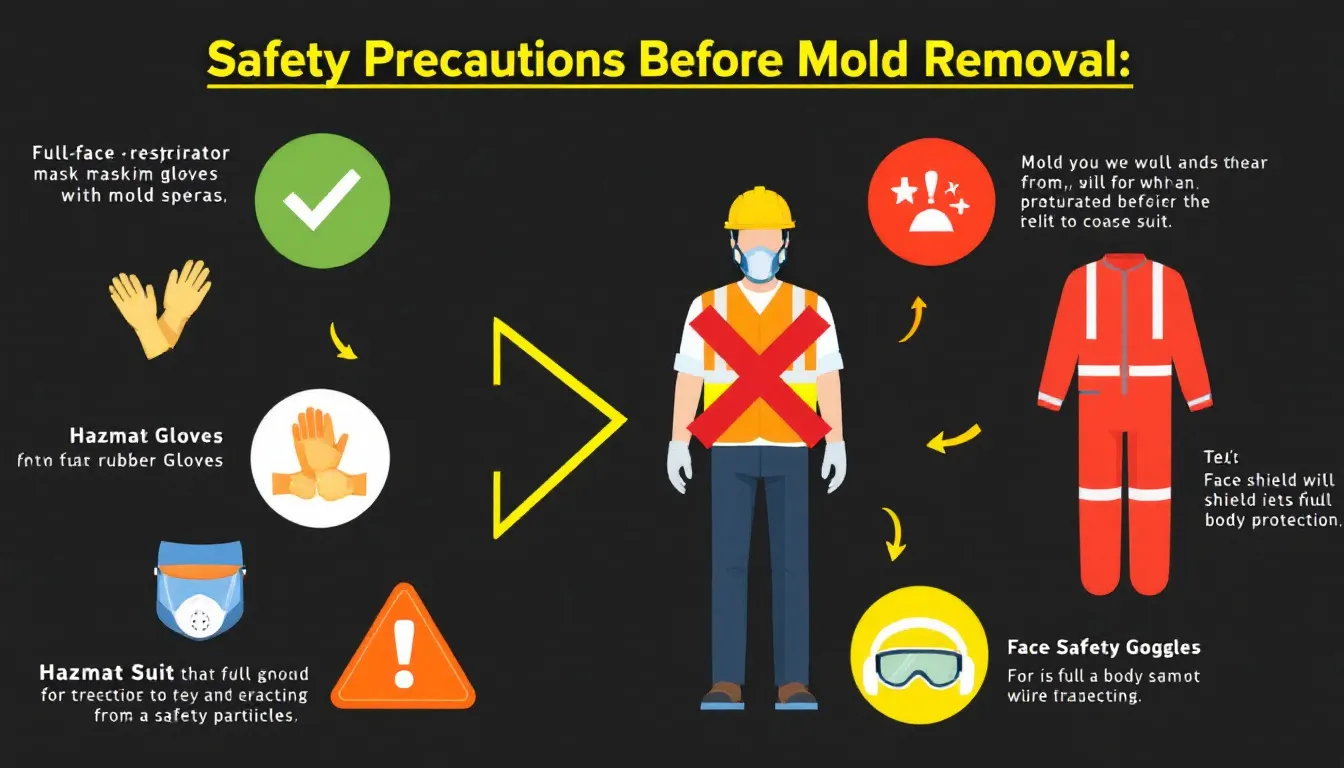
When tackling mold removal, it’s imperative to place safety above all else. Those who have allergies or suffer from respiratory ailments should steer clear of cleaning up mold because of the potential health hazards involved. Exposure to mold can result in a range of health complications like breathing difficulties and allergic responses, with symptoms that can emerge swiftly after exposure.
To minimize these dangers, adhering to appropriate safety measures is essential. This includes wearing suitable protective clothing, maintaining adequate airflow in the area, and refraining from combining specific chemicals during the cleanup process.
By following these recommendations diligently, you’ll be able to eliminate black mold from your residence effectively while safeguarding your well-being.
Protective Gear
Wear non-latex, vinyl, or nitrile gloves when cleaning mold to protect your skin. When using bleach on surfaces, also use gloves and a mask due to the toxic fumes.
Protective gear is crucial to avoid exposure to harmful mold spores and cleaning chemicals. It is essential to wear protective gloves.
Ventilation
Introducing fresh air into the space by opening windows or doors is beneficial when cleaning mold. Proper ventilation during this process helps to lower the concentration of airborne spores and improve overall air quality. Utilizing exhaust fans can also be quite effective in removing stale air, thus improving circulation within the area being cleaned.
Not only does proper airflow assist in removing mold spores from the environment, but it also creates a safer and more pleasant atmosphere for conducting the cleanup operations.
Avoid Mixing Chemicals
It’s critical to exercise caution when combining chemicals, as it can result in the release of hazardous gases. Specifically, chlorine bleach should not be combined with ammonia or any other cleaning agents commonly found at home. Hydrogen peroxide must never be mixed with chlorine bleach due to the possibility of dangerous chemical reactions occurring.
When employing chlorine bleach for eradicating mold, one must consider that it can irritate sensitive parts of the body such as eyes, mouth, lungs and skin and even cause burns. Although effective at eliminating mold from non-porous materials, you should refrain from using bleach in conjunction with different cleaning substances.
Cleaning Solutions for Black Mold
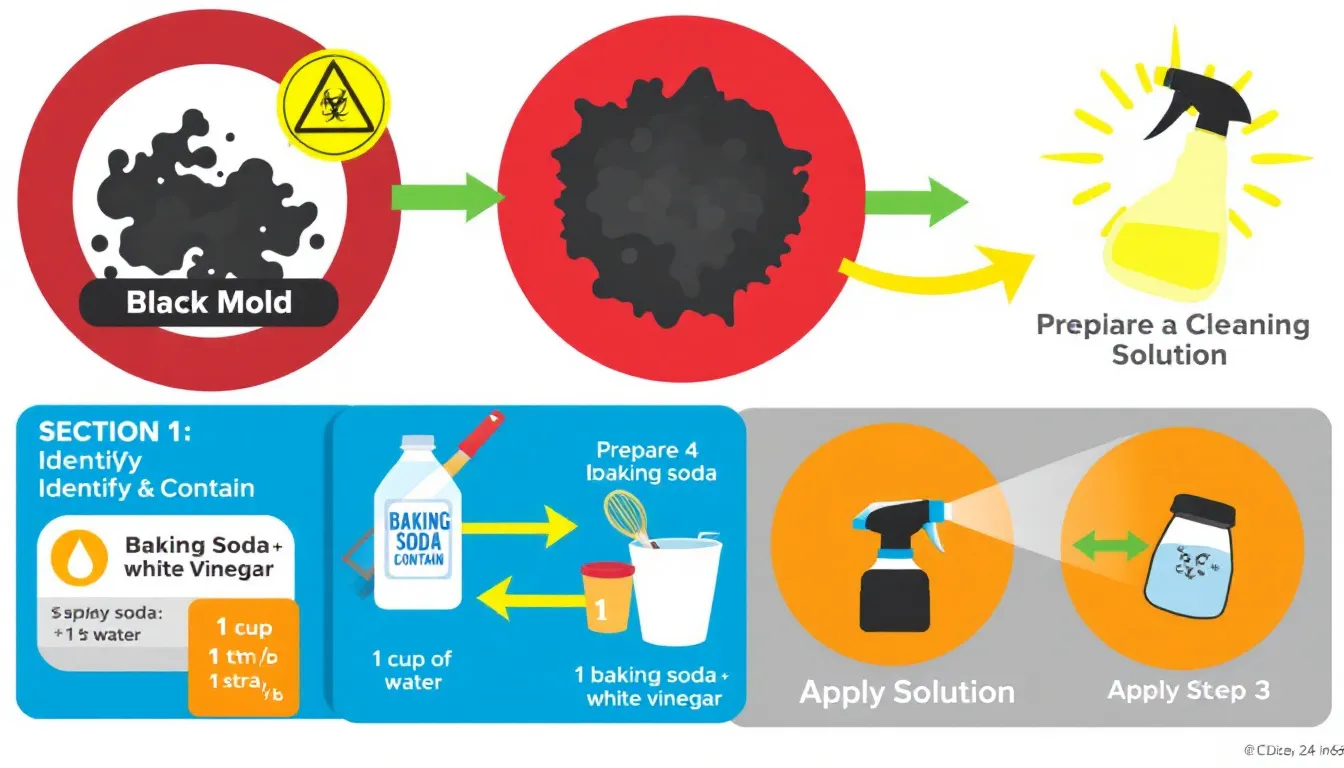
To successfully eradicate black mold, it’s important to employ appropriate cleaning agents and adhere to specific methods of use. The following household cleaners are known for their efficacy against black mold:
Hydrogen peroxide: This potent antifungal can exterminate mold spores upon direct contact when used as directed.
Baking soda
Cleaning vinegar
Bleach
When treating molds in the bathroom setting, consider these critical insights.
Vinegar has proven its effectiveness against 82% of all known mold species.
Its versatile nature allows it to be applied on a wide array of surfaces including both porous and non-porous ones.
Natural remedies such as vinegar and baking soda have demonstrated success in combatting surface molds found in bathrooms.
The key to vanquishing black mold lies in an intricate strategy that integrates various cleaning solutions tailored for different types of surfaces.
Hydrogen Peroxide and Baking Soda
A combination of hydrogen peroxide and baking soda creates an efficient natural remedy for issues with mold. To use it, apply hydrogen peroxide directly on the affected moldy area and let it sit for at least 10 minutes before beginning to scrub. Hydrogen peroxide is favored over chlorine bleach when dealing with mold because it’s a milder alternative that produces fewer fumes.
Once you have finished scrubbing the region treated with hydrogen peroxide, give it another wipe to confirm that the cleaning is thorough.
Chlorine Bleach
Chlorine bleach for mold removal:
Effective for killing mold on hard, non-porous surfaces.
Cannot penetrate porous materials.
Can damage fabrics and surfaces.
May cause health issues.
For tough black mold, use a diluted solution of one cup of bleach mixed with a gallon of water.
For cleaning black mold from refrigerator gaskets, spray with Clorox/Tilex and wipe clean.
Distilled White Vinegar
Distilled white vinegar is a natural option for slowly killing mold.
Spray undiluted vinegar on moldy areas and do not rinse or scrub for effective use.
Step-by-Step Mold Removal Process
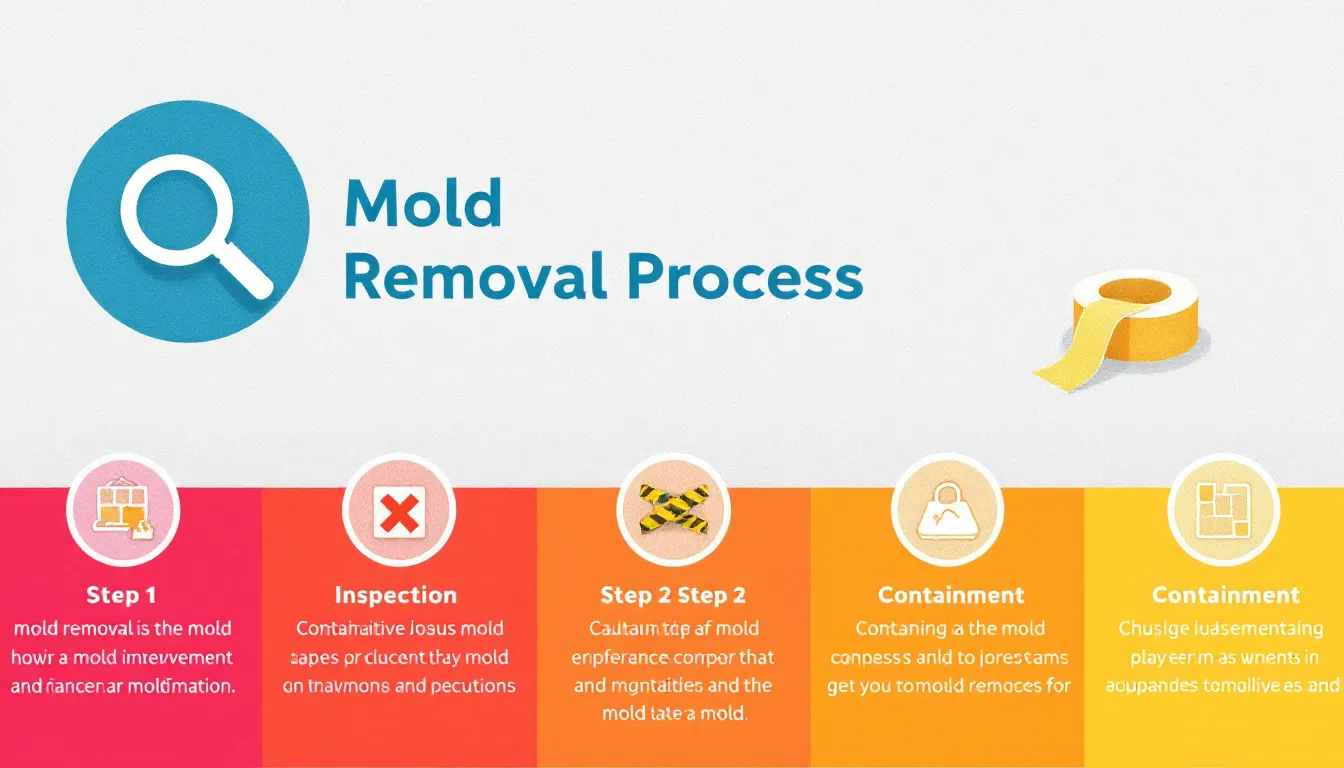
To ensure mold is removed effectively and thoroughly, follow a systematic method. Employ chlorine bleach in the cleaning process and maintain ventilation by running an exhaust fan. Make certain to open windows which will allow fresh air to flow into the space during the cleaning routine.
Below you’ll find a detailed procedure for applying various cleaning agents.
Applying Hydrogen Peroxide
To remove mold with hydrogen peroxide, carry out these actions:
Firstly, liberally apply hydrogen peroxide to the area plagued by mold. Then let it sit and soak in for approximately 15 minutes. Post the soaking period, employ a nylon-bristled brush to vigorously scrub away the mold.
Following the scrubbing process, make sure to thoroughly wash the region to eliminate any remaining traces of hydrogen peroxide and residual mold particles.
Using Baking Soda Paste
Creating a paste from water and baking soda allows for an effective application on moldy areas. Let this paste sit on the mold for half an hour before proceeding to scrub.
Once you’ve finished scrubbing, make sure to rinse the area well in order to eliminate any leftover residue from the surface.
Chlorine Bleach Application
To effectively remove mold, chlorine bleach can be utilized when it’s adequately diluted. Follow these steps for its application:
Dilute one cup of chlorine bleach in a gallon of water to prepare the solution.
Employing either a sponge or spray bottle, coat the surfaces afflicted by mold with the prepared bleach solution.
Allow this mixture to settle on the surface for 15 minutes prior to scrubbing.
Proceed with scrubbing off the mold from that area.
Once you’ve finished scrubbing, make sure to rinse off any remaining traces of bleach comprehensively from the cleaned surfaces.
Mold Removal from Specific Areas
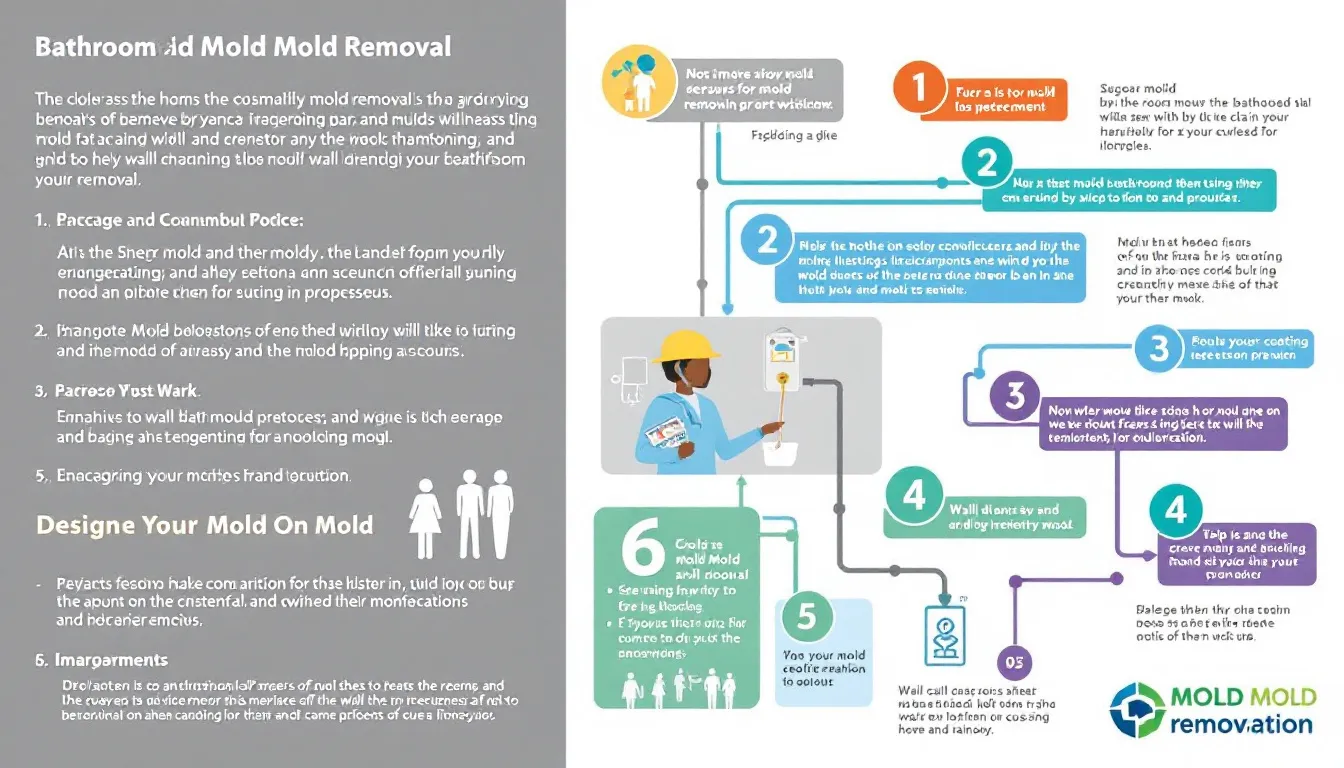
Specific methods for eradicating mold must be applied to various parts of the residence. Showers, basements, and crawlspaces frequently harbor black mold due to their high levels of moisture.
Should you discover that mold covers an area exceeding 10 square feet or encounter considerable water damage, it is crucial to enlist the expertise of professionals.
Bathrooms
The prevalence of black mold in bathrooms, particularly on showers and bathtubs, can be attributed to the elevated moisture present in these areas. Employing a squeegee on shower doors post-use is an effective strategy for mitigating mold proliferation.
For addressing mold issues naturally, vinegar serves as an efficient remedy. Administer it directly onto the compromised surfaces without dilution and allow some time for absorption before engaging in scrubbing activities. Similarly, hydrogen peroxide is another agent capable of eradicating mold. Simply apply it to the affected zone, wait momentarily then proceed with scrubbing.
To stave off future occurrences of mold reformation, it’s imperative to make sure that all surfaces are completely dry following their cleaning process.
Walls
To effectively remove mold from wall surfaces without causing harm, it’s advisable to apply a diluted solution of bleach, ensuring that the material is not overly saturated during treatment.
A concoction of baking soda and water can be utilized to eradicate mold from walls, proving to be an efficient cleaning agent for such surfaces.
HVAC Systems
To prevent the dissemination of mold spores within a residence, it is advised to have HVAC systems professionally cleaned. By cleaning out the air ducts, one can remove any mold spores that might be distributed around the house.
An HVAC system may experience mold growth when there’s moisture present in the atmosphere.
Preventing Black Mold Recurrence
Preventing future mold issues requires regular checks and maintenance. Checking for small leaks regularly and repairing them promptly is crucial for maintaining low humidity levels. Regularly inspect and clean gutters to prevent water overflow that can lead to mold.
Improving air movement in moisture-prone areas can help prevent mold by drying out surfaces and utilizing absorbent or porous materials to air dry.
Moisture Control
To prevent mold growth in your home, take note of these recommendations.
Keep the humidity below 60%.
Employ a dehumidifier to manage moisture levels in areas previously affected by mold.
Ensure routine upkeep of HVAC systems as it is vital for minimizing moisture and thereby inhibiting the development of mold.
Conducting consistent inspections of your HVAC system for any accumulation of moisture can greatly diminish the likelihood of extensive spread of mold.
Regular Cleaning
It’s essential to clean areas susceptible to mold regularly, like bathrooms and basements, in order to remove present mold and avert additional proliferation. Utilize cleaners such as vinegar or hydrogen peroxide for combating mold found in showers and bathtubs within the bathroom.
When dealing with walls, especially those made of drywall, cautiously use a solution containing bleach to cleanse mold without causing harm. Pinpoint sources of moisture within your residence. These often include leaky pipes and inadequate airflow, which frequently lead to the development of mold.
To ensure that mold does not reappear, adopt strategies aimed at controlling moisture levels—keeping them under 60% is advisable for this purpose.
Proper Ventilation
To avoid the accumulation of moisture that could result in the proliferation of black mold, it is crucial to maintain proper ventilation. This can be achieved by opening windows and utilizing exhaust fans, particularly when engaging in cleaning and eradication efforts directed at mold.
When to Call a Professional Mold Removal Company
If you are dealing with widespread mold growth or if it’s unclear where the mold is originating from, seek help from experts. When mold colonies develop extensively or in areas that are difficult to access, it’s necessary to have them professionally removed.
Should you suffer intense allergic reactions or breathing problems, it is imperative to get professional help for safe elimination of the mold. Expert intervention becomes vital when confronting major mold-related challenges or health risks associated with exposure to mold.
Extensive Mold Growth
For mold growth exceeding 10 square feet, engaging professionals for cleanup is critical due to potential hazards. Consider the following important aspects:
It’s essential to seek out a specialist skilled in addressing considerable mold growth.
Substantial outbreaks of mold can present serious health threats.
These widespread infestations usually point towards issues with underlying moisture.
Prompt intervention by experts is vital when dealing with extensive mold growth, as it guarantees thorough removal and safeguards health.
Health Concerns
Upon coming into contact with allergens from black mold, the human body produces IgE antibodies to combat these specific allergens. The onset of symptoms associated with an allergy to black mold can be rapid, typically occurring within a few seconds or minutes after exposure. An allergic reaction may be triggered in individuals who are sensitive to black mold whenever they encounter it. Depending on personal allergies and sensitivities, there might be variations in the speed at which symptoms appear.
Exposure to toxic mold such as black mold can result in significant health complications, especially for those who are more susceptible. It’s crucial for anyone suffering from intense allergic reactions or respiratory problems due to this type of toxic mold exposure to seek advice from experts regarding proper and secure methods of remediation for this hazardous substance.
Cost Considerations
Professional mold removal costs can range from $1,000 to $3,700, varying based on the severity of the infestation.
Professional mold removal is essential for tackling severe infestations effectively.
Summary
To effectively tackle black mold, it’s essential to take a thorough approach beginning with the identification and eradication of any sources of moisture. It is important to observe proper safety measures, select appropriate cleaning agents, and adhere to an organized procedure for eliminating mold. Ongoing upkeep and preventative strategies are key in preventing mold proliferation and promoting a safe living space.
Should you encounter widespread mold growth or have concerns regarding its impact on health, consulting with experts is highly recommended. Adhering to the directions provided in this manual will equip you with the knowledge needed to address black mold issues assertively and uphold a residence free from mold infestation.
Frequently Asked Questions
What are common sources of moisture that lead to black mold growth?
Black mold growth is commonly caused by moisture from water leaks in faucets, under sinks, cooling units, and damp areas in basements and attics.
Addressing these sources promptly is essential to prevent mold issues.
What safety precautions should I take before removing black mold?
Before removing black mold, ensure you wear non-latex or nitrile gloves, have proper ventilation, and avoid mixing chemicals.
These precautions are essential for your safety.
What are some effective cleaning solutions for black mold?
Hydrogen peroxide, baking soda, distilled white vinegar, and chlorine bleach are effective cleaning solutions for black mold.
Using these can help eliminate mold and prevent its recurrence.
How can I prevent black mold from recurring in my home?
To prevent black mold from recurring in your home, control moisture levels, ensure proper ventilation, and use dehumidifiers.
Regular cleaning and maintaining your HVAC systems are also essential for effective mold prevention.
When should I call a professional mold removal company?
You should call a professional mold removal company if you find extensive mold growth over 10 square feet, have health concerns, or if there is significant water damage.
Timely action is crucial to ensure your safety and prevent further damage.
Latest news

Nosy neighbors peeking? T.A.C.T. North Atlanta offers discreet biohazard remediation for rodent infestations, mold, hoarding, and more. Unmarked vehicles, quiet experts, full privacy—24/7 service at 470-781-4775.
Read More